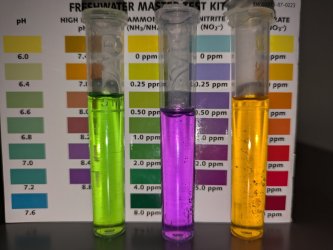Fishoftheday
New Member
Hi,
I've taken the plunge and gotten my 1st tank, 125L, moderately planted with rock and driftwood. I've opted for a fishless cycle and I'm using fish flakes as my ammonia source. I've been adding a few pinches each day (unsure on how much I should or should not be using) and I've also used fluval biological enhancer to give myself a kick-start. Water isI've put a picture of my current water parameters (I'm now 7 days into the cycle) and I guess I'm after reassurance I'm on the right track, and if I've done or doing anything to delay the cycling process.
Any help or advice would be greatly appreciated!
Thanks in advance

I've taken the plunge and gotten my 1st tank, 125L, moderately planted with rock and driftwood. I've opted for a fishless cycle and I'm using fish flakes as my ammonia source. I've been adding a few pinches each day (unsure on how much I should or should not be using) and I've also used fluval biological enhancer to give myself a kick-start. Water isI've put a picture of my current water parameters (I'm now 7 days into the cycle) and I guess I'm after reassurance I'm on the right track, and if I've done or doing anything to delay the cycling process.
Any help or advice would be greatly appreciated!
Thanks in advance



 my only excuse is that was I was being nagged about lunch.....
my only excuse is that was I was being nagged about lunch.....